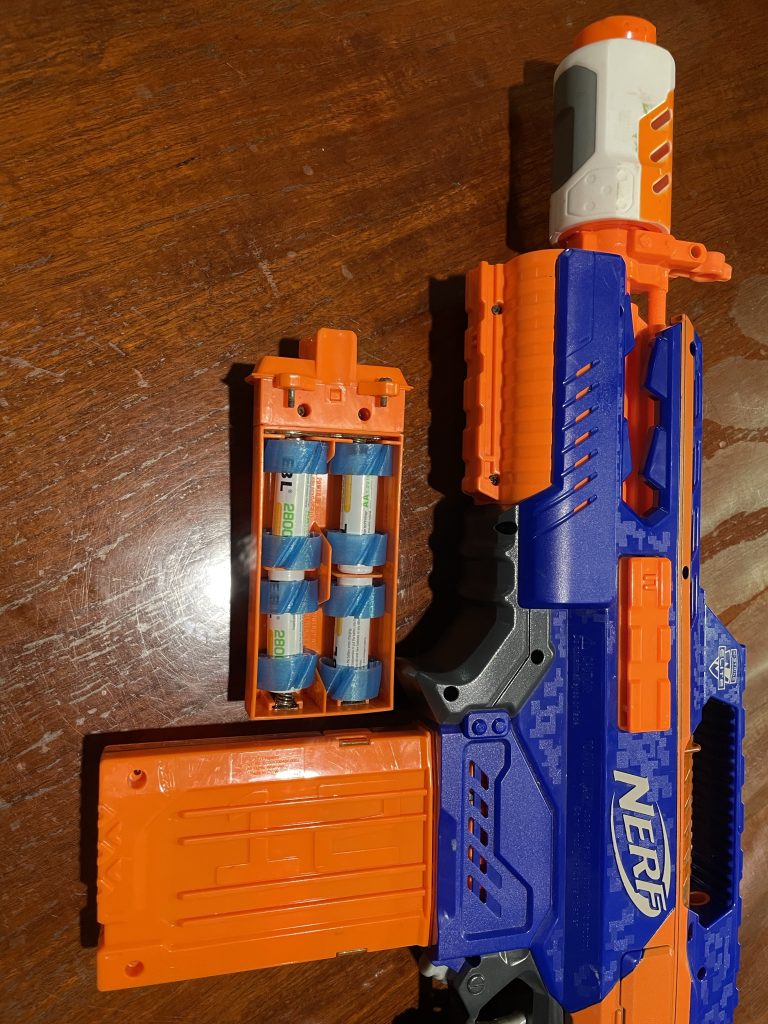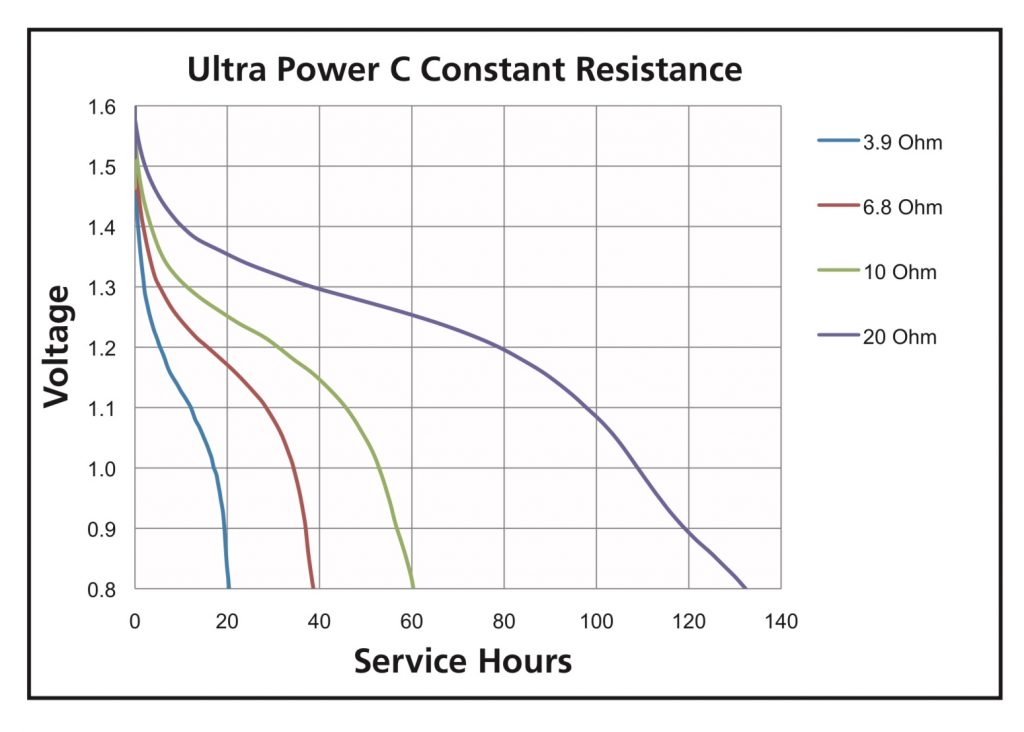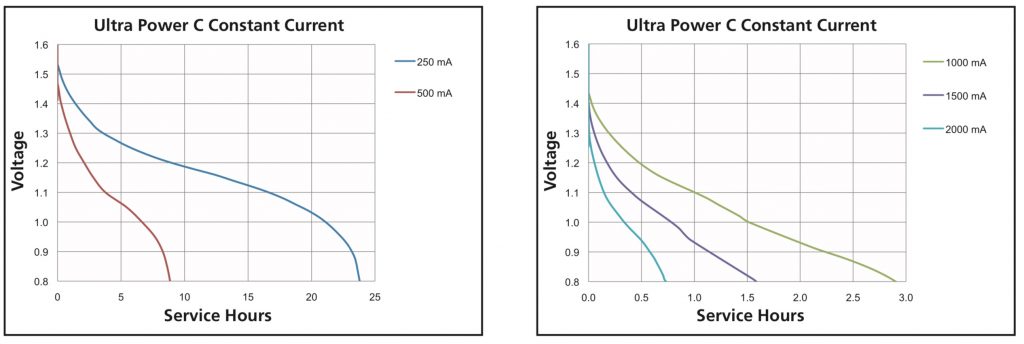I 3D printed some AA to C battery adapters to use in my sons Nerf gun (which currently doesn’t work- I can forsee a post on this repair soon) as we have a supply of these because we use rechargeable batteries. I was asked the question “Do those really work in practice? Do you get any appreciable run time from AA’s in something that expects C’s?” to which the short answer is YES, and the long answer is below.

There are 2 common types of disposable primary cells, carbon-zinc and alkaline (yes I know there is also lithium, but it is relatively new and not that common comparatively speaking). Alkaline has a much higher performance than carbon-zinc so that is what I’ll compare NiMH to.


The first thing you should notice is that Sanyo advertises the battery capacity on the first 2 rows while it is completely absent on Duracell. This is not because they don’t want you to know, it is because it varies wildly depending on load and temperature.


If we look at the above table the 20 Ohm curve gives us about 9.36Wh (1.2V/ 20 Ohm * 1.2V * 130 hours) while the 2A constant current curve gives us 6Wh (1.1V * 2A * 2.8 hours). If temperature is reduced 20degC this nearly halves due to the chemistry. Alkaline cells have a relatively high internal resistance which also contributes to the loss in capacity at higher loads.

As can be seen above the Sanyo discharge curves vary from about 1800-1900mAh with a load variation of 400-4000mA- much more stable capacity. This equates to 2.28Wh (1.2V * 1.9Ah)

I use a cheaper brand to Sanyo which has a higher capacity, lower life span and worse self discharge characteristics. Assuming similar discharge attributes but with a higher capacity this gives 3.36Wh (1.2V * 2.8Ah).

The Nerf gun uses an electric motor and draws 30W which equates to 6.25A (30/1.2*4) so we will use the alkaline 2A discharge table for comparison.
The NiMH is nearly 1/2 of the high current capacity of Duracell C cell. The battery will need to be replaced twice as often, but being rechargeable, and we all ready have those batteries available, it makes economic sense to use rechargeable AAs in place of C. It makes even more sense if cheaper alkaline cells are used as their performance is worse.
It also should be noted that ultra low current applications of alkaline cells allow the battery capacity to double and even triple to what is shown in the tables above, such as use in clocks and other low current devices where it makes sense to use them.
https://eneloop101.com/wp-content/uploads/2017/02/HR-3UTGB.pdf
https://docs.rs-online.com/1652/0900766b8173b481.pdf